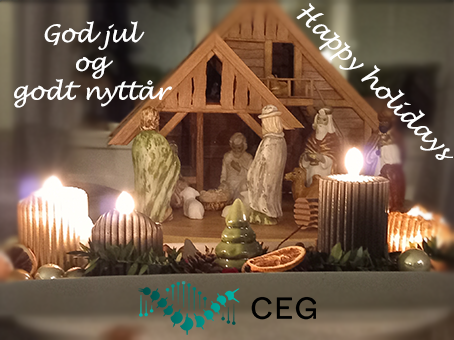We started this blog with an advent calendar for 2020 summarizing the highlights of our research year and presenting ourselves. Since we have continued that tradition.
Category: Advent calendar

Door 23: Struggles, Setbacks & Solutions
I’m three out of four semesters deep into an MSc, meaning that in a few short months I will be delivering a completed thesis, with detailed results and an in-depth discussion. I’ve had a timeline laid out since the very beginning and am largely on track. That isn’t […]

Door 22: Mystery bird uniting different museum groups
Following the example of Pia’s post about the gift of collaboration, I will introduce you to a side project I did with two colleagues from a different research group at today’s door. It started with a strange sighting from a friend: a bird that looked like a species […]

Door 21: The evolution of stress related genes in parasitic flatworms
It is always a pleasure if international scientific cooperations deliver exciting results. This was the case with my cooperation with colleagues at the University Hasselt, Belgium. The study was a key component of the PhD thesis of Armando J. Cruz‑Laufer who also coordinated the drafting of the scientific […]

Door 20: Looking at the past to understand the future of Leopard Seals
Cover picture by Sue Flood Last time, I wrote about how glacial-isolation caused the divergence of a small population of ringed seals in the Ilulissat Icefjord, West Greenland. The text ended with a final consideration on the importance of developing research plan to retrieve molecular data for Arctic […]

Door 19: The genome of the flatworm model species Schmidtea mediterranea
Earlier this year in September Ivanković and colleagues published the results of a study coordinated by the research group of Jochen Rink at the Max Planck Institute for Multidisciplinary Sciences, Göttingen, Germany and presented highly improved genomes of the four planarian flatworm species from the genus Schmidtea. These […]

Door 18: Forgotten Reefs; Struggles for Survival in the Strait of Hormuz
For the next door of our Advent calendar, I’d like to take you on a journey to the Strait of Hormuz, one of the most politically significant waterways. It is located between the Persian Gulf and the Gulf of Oman in the northern Indian Ocean, and acts as […]

Door 17: Meet Finn, an adventurous zooplankton!
Hi! My name is Finn, and I’m a teen Calanus finmarchicus (proudly in my fifth copepodite stage of development!). I am honoured to open the Door 17! To be honest, I should be napping right now, like all my trillions of friends, but I’m just too excited because soon, I’ll […]

Door 16: Small creatures and studying them matters
For today’s advent calendar, I want to talk about my favourite organisms, the protists. In one of my last years advent calendar posts, I talked about their diversity and importance for ecosystem functioning and, therefore, felt like introducing this recent paper by Perrin & Dorrel (2024) fits the […]
